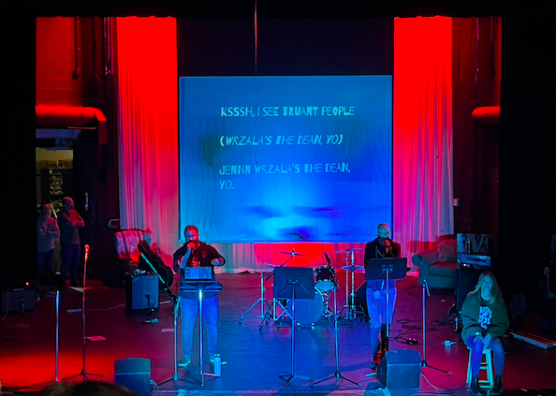Intrigue and mystery: New YA release refreshes market
April 4, 2023
The first thing that drew me towards Mara Rutherford’s The Poison Season was the gorgeous dust jacket detailing an ominous array of forest creatures on it. Throughout the book it was cool to see how the plot was connecting to the cover and keeping me hooked. The book focuses on Leelo and her family who live on the island of Endla in the middle of a poisoned lake. On the island, one of the last remaining wandering forests lives and has given the Endlans a special ability of song in order to help protect it… or so they have been told.
Jaren, a boy on the mainland, moves to a small village in the area and finds out about the legends of the magic island, which he chalks up to be nothing more than fear-mongering. Through a turn of events, Jaren ends up on the island by accident and has to contend with magic and the politics that have sprung together to make a deadly trap. Taking a leap of faith Leelo goes against the beliefs that she’s been taught and attempts to keep him alive and then has to deal with the consequences of her actions.
Rutherford’s strength is worldbuilding and being able to tie that into the idea of cultural development and the values a group holds. This can be seen in the twisted sense of humanity and justice that Endlans have. They are willing to let children have a chance of survival in the outside world who don’t possess magic, but treat individuals who have violated the rules and outsiders with cruelty. Having this idea in the book gave the societal structure more depth and originally connected me to the Endlans as the reader until Leelo realized that not everything is as it seems.
A large part of the plot revolves around naivety and deception by the people in control. Leelo, the main character, has recently started her year as a Watcher giving her an opportunity to protect her community from the outsiders on the mainland and furthering her place in the community. She, unlike many of the others, has no interest in the violence that the forest demands of them during hunts and if they come across an outsider on the island. This was a nice twist to the typical coming-of-age tropes in fantasy, where the characters developed based on their surroundings and outside forces instead of them changing to move the plot.
Leelo has a clear character arc throughout the story, starting from someone who just went along with the traditions that they had in order to survive, but then, in the end, broke free of them to stand up for what she knew was right. While some of her actions and words felt a little unnatural at times – like Anakin Skywalker in Attack of The Clones – she still had me rooting for her throughout the book.
A common criticism that this book avoided was the idea that all authority is bad and the young adult must know best. Rutherford portrayed all of her characters in a way where they could see why their elders believed what they did and could reflect on parts of their experiences to resolve some of the problems in their community. Breaking free of fear and the past to demonstrate the core values of family and honesty in a new way helped make both Leelo and Jaren more relatable and realistic.
The Poison Season kept me engaged and the creative approach to a dystopian-like world with magic paired with a unique world was refreshing in terms of a standard YA fantasy book. The Poison Season is a great read for readers who are dipping their toes into fantasy or are looking for a quick read.


